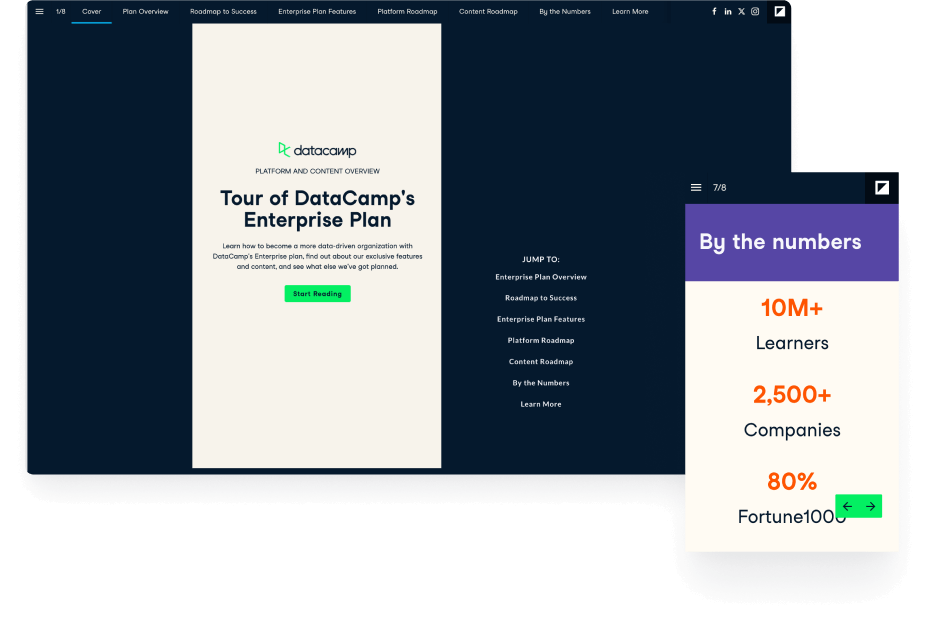To get some perspective on how difficult B2B sales can be, keep in mind how overwhelming it is to be a buyer these days. Just choosing a brand of toilet paper can become an anxiety-ridden process of analyzing reviews, revisiting the timeless 1-ply vs 2-ply debate, and looking for possible discounts. And toilet paper isn’t exactly a complex technical solution.
Now imagine having to make a vital business purchase that involves numerous departments, a new technology that may impact infrastructure and workflow, and a large financial commitment.
It’s amazing anyone buys anything! But they do, it just doesn’t look the way it did a few years ago.
Buyer enablement is critical when B2B sales are harder than ever
What makes this modern sales landscape tricky to navigate is how quickly it’s evolved. The one-on-one experience between a rep and a buyer has vanished. What used to be a more direct, seller-driven process has shifted in the blink of an eye. B2B has more internal stakeholders sharing more info than ever, with 6-10 people on average participating in the buying process according to surveys done by Gartner.
This buying team can consist of folks from a dizzying array of departments, all with slightly different perspectives and priorities. There could be voices from the finance, legal, compliance, procurement, data protection, IT management, and accounting departments just to name a handful.
And those 6-10 people are each bringing a full plate of their own research to the table. So instead of a sales rep walking a few people through a pitch, today’s process involves getting a much larger group on the same page and managing the boatload of data and opinions they come equipped with.
So it’s not quite fair to say the sales landscape has changed; it’s the buying process that has changed. This shift in how buying is done means marketing and sales teams must look ahead and be prepared for those changes, to help customers overloaded with data navigate the obstacle-laden journey. Leveraging expertise from SDR companies can be instrumental in adapting to evolving buying behavior.
Buyer enablement is more about helping customers buy than it is about helping sales teams sell.
What’s happening in B2B isn’t just a subtle change in tactics but a paradigm shift that’s evolving the world of sales. A big part of that evolution is adjusting the view of what buyer enablement is and how it should work.
Buyer enablement is the degree to which you are going on the purchase journey with the customer and helping them buy. Part of going on that journey is first understanding the customer and the buying landscape they function within so that you can best predict their needs.
Giving sales teams the best chance at success means providing customers with the data and guidance they need at the exact right moment. Which could be anytime, and could center around many types of content from fact sheets and technical specifications to proposals and brochures, depending on who’s involved and what stage of the process they’re in.
Building confidence among this coalition as they inch toward consensus creation is at the heart of buyer enablement: it’s framing a shared understanding of any issues within the buying group, helping them engage in healthy debate to resolve any disagreements, and crafting a case for purchase that can secure the budget.
Research from Sirius Decisions shows that buying by committee and consensus is growing, while independent buying is shrinking, a trend marketers should only expect to continue.
Modern buyer enablement means supporting sales teams by supporting the buyers with content and insight throughout the journey. Adding insight to their journey will increase your chances of getting a deal done.
Content is key to offering buyers confidence
The role of content in adding insights is essential. Because B2B buying includes so many people and so much data already, simply adding to that overwhelming mix with bland or unnecessary content will slow down and even sabotage your goal.
The content needs to be relevant to the buyer’s needs at that particular moment, and must also be shareable in a convenient format that is accessible whenever the buyer might need it. Since you never know at which point of the buyer’s journey a key piece of content will make a difference, it all needs to be available and dynamic.
And dynamic content is much more than a colorful PDF. You should have a variety of offerings that are engaging and vibrant, including infographics, videos, simulator tools, data analyzers, and other interactive ways of reaching your customers.
The format matters and the messaging matters too. Content should provide confidence to a customer looking to make a tough choice, and align emotionally with their needs. Aligning emotionally might sound like a tough ask, but just remember your own customer experiences, whether personal or professional, and how the right message at the right time can make all the difference.
Staying competitive in the new B2B market requires an understanding of the challenges facing the modern buyer and a commitment to forward-thinking engagement driven by innovative content. Anything less and you’ll be stuck selling toilet paper.
.png?width=1600&name=Group%2012%20(1).png)


